
Luke Wadding, O.F.M., was an Irish Franciscan friar and historian.
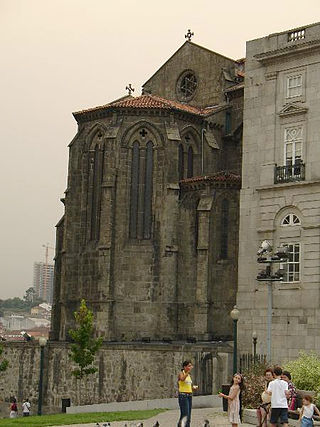
The Church of Saint Francis is the most prominent Gothic monument in Porto, Portugal, being also noted for its outstanding Baroque inner decoration. It is located in the historic centre of the city, declared World Heritage Site by UNESCO.

St. Mary's Basilica – officially The Church of the Immaculate Conception of the Blessed Virgin Mary – is a church of the Diocese of Phoenix located at 231 North 3rd Street at the corner of East Monroe Street in downtown Phoenix, Arizona. It was previously known as St. Mary's Church. It was built from 1902 to 1914 in a combination of the Mission Revival and Spanish Colonial Revival styles, and was dedicated in 1915. It replaced an earlier adobe church built in 1881 when the parish was founded. From 1895 the parish was staffed by the Franciscan Friars, but it is currently staffed and operated by clergy of the Diocese of Phoenix. The current church was elevated to a minor basilica by Pope John Paul II in 1985.
The Third Order Regular of St. Francis of Penance or simply the Third Order Regular of St. Francis is a mendicant order rooted in the Third Order of St. Francis which was founded in 1221. The members add the nominal letters T.O.R. after their names to indicate their membership in the congregation.
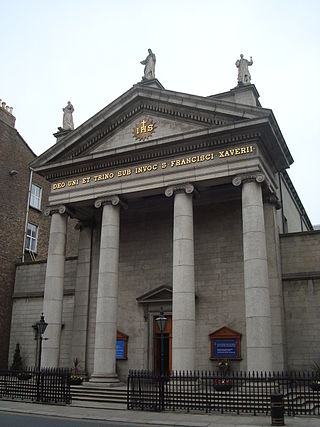
Saint Francis Xavier Church, popularly known as Gardiner Street Church, is a Catholic church on Upper Gardiner Street near Mountjoy Square in Dublin, Ireland. The church is run by the Jesuits.

St Audoen's is the church of the parish of St Audoen that is located south of the River Liffey at Cornmarket in Dublin, Ireland. The parish is in the Roman Catholic Archdiocese of Dublin. The church is now home to the Polish chaplaincy in Ireland. There is an Anglican church of the same name adjacent to it.
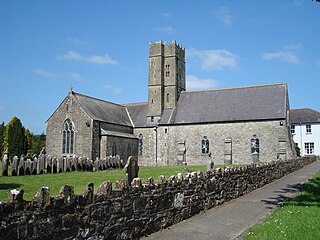
Multyfarnham Friary is a Franciscan friary located in Multyfarnham, County Westmeath, Ireland. It dates to the 15th century.
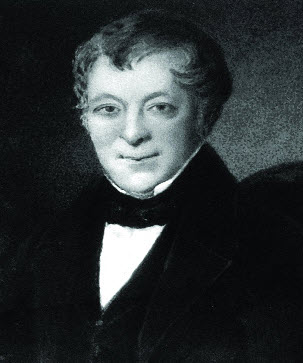
Patrick Byrne was an Irish architect who built many Catholic churches in Dublin. He also served as a vice president of the Royal Institute of the Architects of Ireland.
Patrick Bonaventure Geoghegan, O.F.M. (1805–1864) was an Irish Roman Catholic clergyman who served firstly as Bishop of Adelaide. Born in Dublin, he became a Franciscan friar and served at a Dublin parish before volunteering for Australia. After five years as Bishop of Adelaide, He returned to Ireland, intending to stay only briefly. He was named Bishop of Goulburn, Australia, but died before he could assume the post.
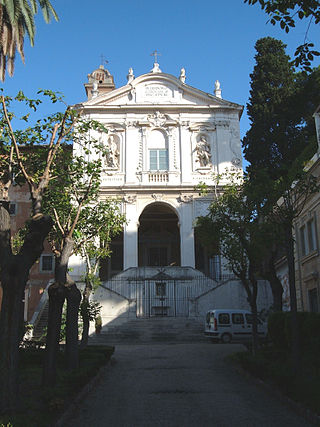
Sant'Isidoro a Capo le Case is a Roman Catholic church, monastic complex and college of the Franciscan Order, in the Ludovisi district on the Pincian Hill in Rome. It contains the Cappella Da Sylva, designed by Gian Lorenzo Bernini, who also designed the funerary monument of his son Paolo Valentino Bernini in it. Since 2017 San Patrizio a Villa Ludovisi became the national church of the United States, Sant'Isidoro has become the National Church of Ireland in Rome.

King's Chapel is a small chapel in the British Overseas Territory of Gibraltar. It is located at the southern end of Main Street and adjoins the Governor of Gibraltar's residence, The Convent. What nowadays is King's Chapel was the first purpose-built church to be constructed in Gibraltar. Originally part of a Franciscan friary, the chapel was built in the 1530s but was given to the Church of England by the British after the capture of Gibraltar in 1704. It was badly damaged in the late 18th century during the Great Siege of Gibraltar and in the explosion of an ammunition ship in Gibraltar harbour in 1951, but was restored on both occasions. From 1844 to 1990 it served as the principal church of the British Army in Gibraltar; since then it has been used by all three services of the British Armed Forces.

St. Paul's is a former church building of the Catholic Church sited on Arran Quay, Dublin, Ireland. The church is used currently by a Catholic youth group and by the St. Gregrorios Jacobite Syrian Christian Church.

Holy Trinity Church, also known as Father Mathew Memorial Church, is a Roman Catholic Gothic Revival church and friary on Fr. Mathew Quay, on the bank of the River Lee in Cork. It belongs to the Order of Friars Minor Capuchin and is the only church dedicated to Father Theobald Mathew.

San Francesco d'Assisi is a 16th-century-style church dedicated to Saint Francis of Assisi, located in Alcamo, province of Trapani, Sicily, southern Italy.
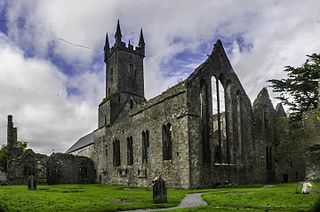
Ennis Friary was a Franciscan friary in the town of Ennis, County Clare, Ireland. It was established in the middle of the 13th century by the ruling O'Brien dynasty who supported it for most of its existence. Following the suppression of the monasteries in the 16th century, the friary continued to function for a while despite the loss of its lands. In the early 17th century, the buildings were handed over to the Church of Ireland as a place of worship. It was used as such until the late 19th century. After the construction of a new Church of Ireland building, the friary fell into ruin. Managed by the Office of Public Works since the late 19th century, it was formally returned to the Franciscan Order in 1969.
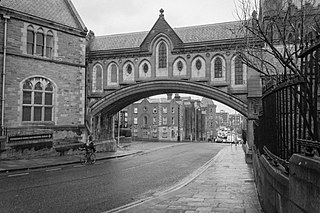
Winetavern Street is a street in the medieval area of Dublin, Ireland.

Immaculate Conception Church, also known as the Church of the Immaculate Conception of Mary, is a Roman Catholic parish church in Clevedon, Somerset. It was built from 1886 to 1887 and was designed by Alexander Scoles, an architect and priest who worked in Somerset. It is located on the intersection between Marine Parade, Marine Hill and Wellington Terrace, overlooking the Severn Estuary. It was founded by the Franciscan Order of Friars Minor who continue to serve the parish.

Cook Street is a street in Dublin running from Bridge Street to Winetavern Street, in the heart of Medieval Dublin.



















